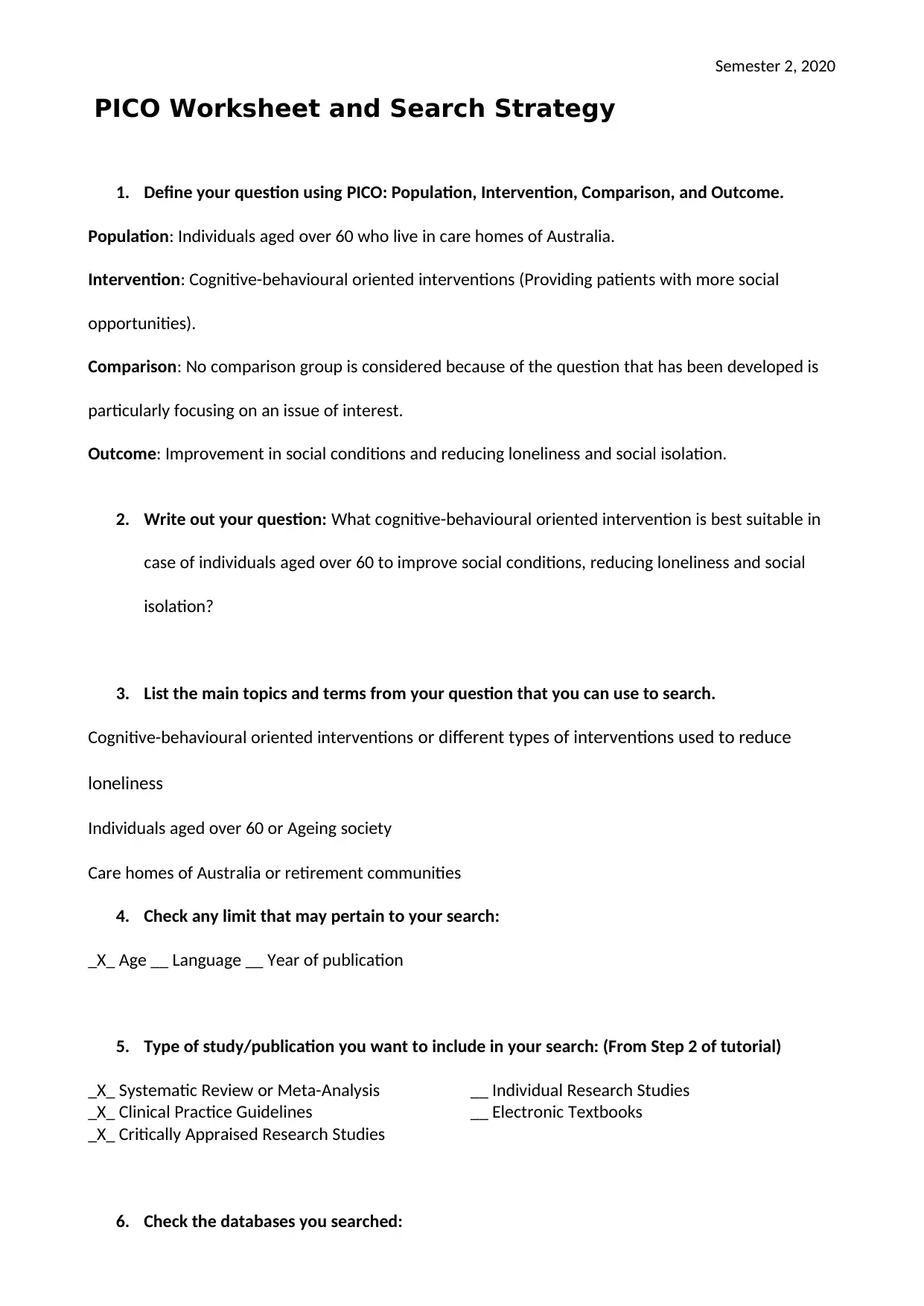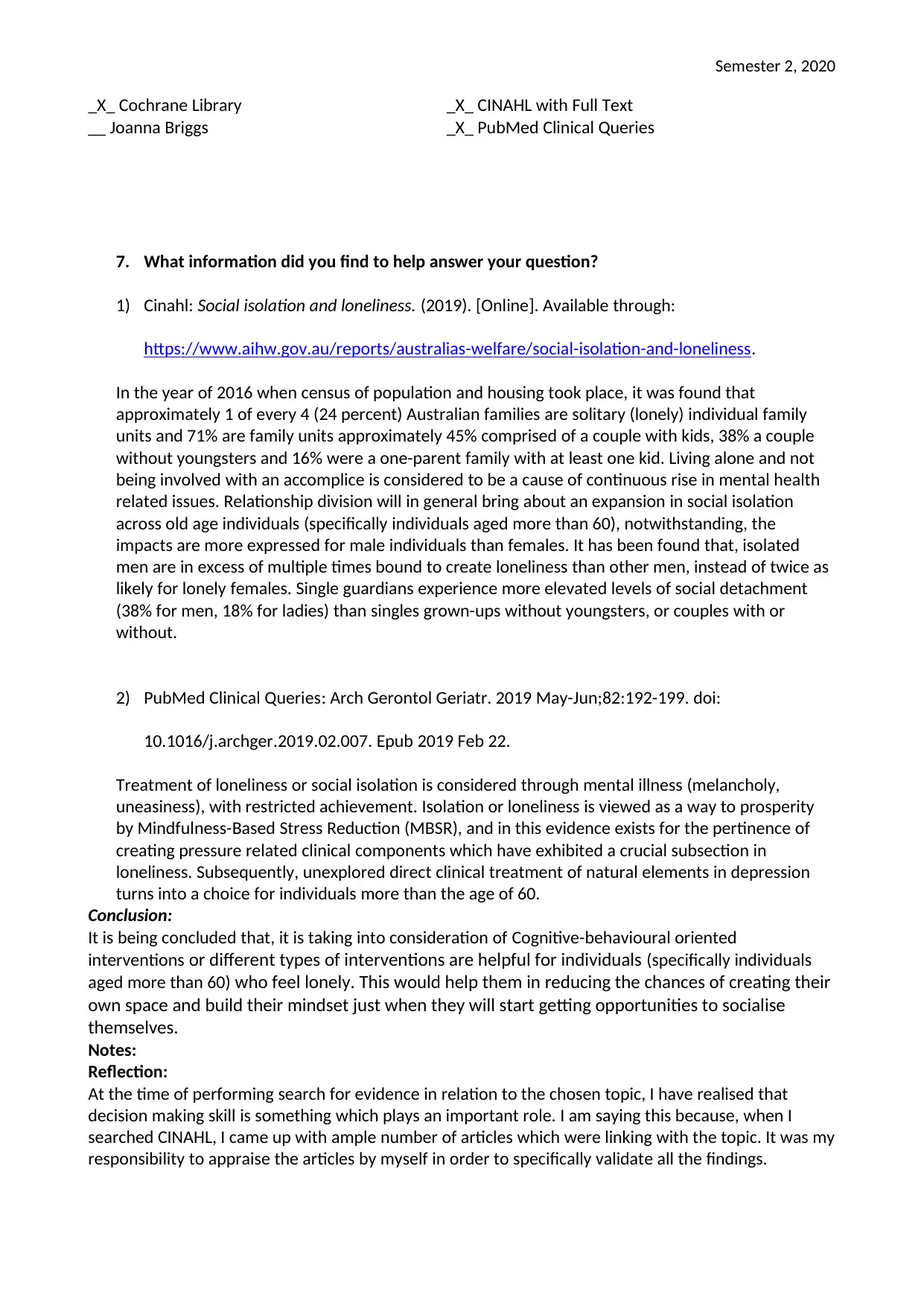Semester 2, 2020: PICO Worksheet and Search Strategy Analysis
VerifiedAdded on 2023/01/06
|2
|743
|88
Homework Assignment
AI Summary
This assignment presents a PICO (Population, Intervention, Comparison, Outcome) worksheet and search strategy focused on identifying effective cognitive-behavioral interventions for individuals aged over 60 residing in Australian care homes to improve social conditions, reduce loneliness, and social isolation. The student defines the research question, identifies relevant search terms, and specifies the databases and study types to be included. The student then provides a summary of findings from CINAHL and PubMed, highlighting the prevalence of loneliness and social isolation among the elderly and discussing the potential of cognitive-behavioral interventions. The conclusion emphasizes the importance of these interventions in promoting social opportunities and building a more positive mindset for the elderly. The reflection section highlights the significance of decision-making skills in appraising the articles and validating the findings during the search process.
1 out of 2





![[object Object]](/_next/static/media/star-bottom.7253800d.svg)